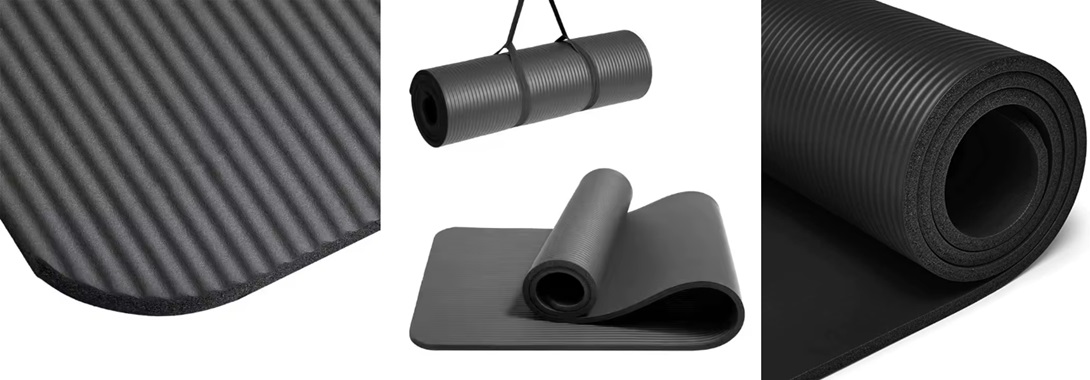
When it comes to finding the perfect yoga mat, the options are endless, but not all mats are created equal. Whether you're a seasoned yogi or just starting out, the right mat can make all the difference in your practice. To help you make an informed decision, we tested the most popular yoga mats on the market, including top brands like Lululemon, Manduka, Alo, and more, the following are the test results.
How We Tested
Our team of yoga enthusiasts and experts evaluated each mat based on:
Grip and Traction: How well does the mat prevent slipping during dynamic poses or sweaty sessions?
Cushioning and Support: Is it comfortable for joints during prolonged kneeling or seated poses?
Durability: Can the mat withstand regular use without showing signs of wear?
Portability: Is it lightweight and easy to carry?
Sustainability: Are the materials eco-friendly and responsibly sourced?
Each mat was put through a series of tests, including hot yoga sessions, Vinyasa flows, and restorative practices, to see how they performed in various conditions.
| Yoga Mat | Pros | Cons | Conclusion |
| Lululemon The Reversible Mat 5mm | - Excellent grip and traction for various yoga practices. | - Expensive. | Ideal for those seeking an all-around reliable mat, especially for varied practices. |
| - Dual-sided for versatility. | - May wear out faster in harsh conditions. | ||
| - Durable and lightweight. | |||
| Manduka PRO Yoga Mat | - Extremely durable. | - Heavy and bulky. | Perfect for serious practitioners who value durability and support. |
| - Great cushioning for joint support. | - High price point. | ||
| - Non-toxic and eco-friendly. | - Needs breaking in for optimal grip. | ||
| - Lifetime warranty. | |||
| Alo Yoga Warrior Mat | - Stylish and high-quality designs. | - On the pricier side. | A top choice for those who want a balance of performance and style. |
| - Excellent grip and stability. | - Might feel too firm for restorative practices. | ||
| - Cushioned yet firm. | |||
| JadeYoga Harmony Mat | - Made from natural rubber. | - Heavier than most mats. | A great eco-friendly mat with excellent grip and comfort, but best suited for those who need extra weight support. |
| - Excellent grip. | - Strong rubber smell initially. | ||
| - Sustainable and eco-friendly. | |||
| - Comfortable for joints. | |||
| Gaiam Performance Dry-Grip Yoga Mat | - Moisture-wicking surface ideal for hot yoga. | - Less durable than higher-end mats. | A solid budget-friendly mat for hot yoga, but not ideal for daily heavy use. |
| - Lightweight. | - Grip can falter in extreme conditions. | ||
| - Affordable. | |||
| Liforme Yoga Mat | - Great grip and cushioning. | - Expensive. | Perfect for beginners or those seeking precise alignment during practice, with eco-conscious materials. |
| - Built-in alignment guides. | - Heavier and bulky for travel. | ||
| - Eco-friendly, biodegradable material. | |||
| - Comfortable for long practices. | |||
| PrAna E.C.O. Yoga Mat | - Made from non-toxic, eco-friendly TPE. | - Less cushioning for joint support. | A great option for those who value portability and eco-friendliness, but not ideal for intense practices. |
| - Lightweight and portable. | - Durability is lower than premium mats. | ||
| - Affordable. | |||
| Yogi Bare Paws Extreme Grip Mat | - Exceptional grip for advanced practitioners. | - Heavy and bulky. | Ideal for advanced practitioners needing high grip and joint support, though it’s heavy for travel. |
| - Made from natural rubber. | - Pricey compared to other mats. | ||
| - Extra-thick for joint support. | |||
| - Non-toxic. | |||
| Hugger Mugger Para Rubber Yoga Mat | - Thick and supportive, great for restorative yoga. | - Bulky and heavy. | Great for restorative yoga with excellent cushioning but not practical for travel or lighter practices. |
| - Made from natural rubber. | - Strong rubber smell at first. | ||
| - Eco-friendly. | |||
| BalanceFrom GoYoga All-Purpose Mat | - Affordable. | - Less durable. | A budget-friendly choice, good for casual or beginner practitioners. |
| - Lightweight and easy to carry. | - Grip can be inconsistent in sweaty sessions. | ||
| - Decent cushioning for general use. | |||
| Lululemon The (Un)Mat | - Ultra-thin and portable. | - Thin, not enough cushioning for some practices. | Great for travel or a minimalistic option, but not ideal for regular practice. |
| - Stylish design. | - Grip can be weak during intense sessions. | ||
| - Perfect for travel. | |||
| Manduka eKO Lite Yoga Mat | - Made from biodegradable material. | - Slippery before breaking in. | A more affordable, eco-friendly option from Manduka, but it requires breaking in. |
| - Affordable compared to Manduka PRO. | - Less durable than the Manduka PRO. | ||
| - Great balance of comfort and support. | |||
| B Yoga Strong Mat | - Stable, excellent grip. | - Heavy and hard to transport. | Great for stability and balance but not the best choice for portability. |
| - Eco-friendly and non-toxic. | - Higher price than similar mats. | ||
| - Cushioned yet firm for balance. | |||
| Alo Yoga Air Mat | - Extremely lightweight and easy to carry. | - Lacks cushioning for joint-heavy practices. | A good travel mat with a minimalist design, but lacks support for intense sessions. |
| - Minimalist design with a smooth texture. | - Less durable than thicker mats. | ||
| Gaiam Cork Yoga Mat | - Unique cork surface that grips better as you sweat. | - Cork can wear down over time. | Ideal for eco-conscious yogis who love a natural, textured surface, but requires maintenance. |
| - Eco-friendly and non-toxic. |
- More expensive than basic mats. |
After testing 15 of the best-selling yoga mats on the market, I evaluated the pros and cons of each. While every mat has its advantages, none of them perfectly combines all the key features that many practitioners look for—durability, comfort, environmental friendliness, excellent grip, and affordability, which are all important considerations for most consumers.
That's where my yoga mat stands out:
Variety of Material Options: Offering a range of eco-friendly or cost-effective materials to suit different preferences and needs.
Variety of Shape Options: Available in different sizes and shapes to accommodate diverse practice styles.
Variety of Thickness Options: Multiple thickness choices ensure the perfect balance of comfort and support for every practitioner.
Customizable and Personalized: Fully customizable to reflect your personal style, with options for color, design, and even branding.
The following are the best-selling yoga mats from the TSYoga brand in 2024:
TSYoga EcoPro Yoga Mat: Known for its eco-friendly materials, this mat offers excellent durability and superior grip. Perfect for practitioners seeking sustainability without compromising on performance.
TSYoga ComfortMax Yoga Mat: A customer favorite for its thick cushioning and extra comfort, making it ideal for longer practices or those needing joint support. The slip-resistant surface ensures stability during practice.
TSYoga TravelEase Yoga Mat: Lightweight and foldable, this mat is designed for yogis on the go. It combines portability with durability, providing a reliable non-slip surface wherever you practice.
TSYoga GripPlus Yoga Mat: Featuring advanced grip technology, this mat ensures maximum stability and traction during poses. It's a go-to for practitioners who need extra support for challenging asanas.
TSYoga BalanceFit Yoga Mat: Designed for balance and performance, this mat has a unique textured surface that provides superior traction and cushioning, making it perfect for yoga and fitness routines alike.
Reflecting on a year of growth, innovation, and mindful movement—our yoga mats have supported countless practices, helping yogis worldwide find balance, strength, and serenity. Here's to another year of transformation and inspiration on the mat!
Transform your yoga practice with the best-selling mats from TS Yoga in 2024. From eco-friendly materials to superior grip and comfort, our mats are designed to support every practitioner. Explore our top-rated options and find the perfect mat for your needs. Shop now and take your practice to the next level!








